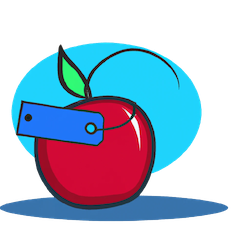Welcome to the world of teaching, where the marketplace for educational resources can be overwhelming and confusing. Teachers are often bombarded with advertisements, promotions, and new products claiming to be the next best thing for their classrooms. As a teacher, making effective buying decisions is crucial for creating a successful learning environment. In this blog post, we will explore the concept of the “Better Buy Lesson” and provide practical strategies for teachers to navigate the complex marketplace of educational resources.
The Better Buy Lesson: What is it?
The Better Buy Lesson is a concept that helps teachers make informed and effective buying decisions for their classrooms. It involves thorough research, critical thinking, and a focus on value rather than price. This lesson extends beyond purchasing physical materials, as it also applies to technology, software, and professional development opportunities.
To make a “Better Buy,” teachers must consider the intended use of the resource, its quality, and its impact on student learning. It also involves understanding the needs of the students and the curriculum requirements. By following the Better Buy Lesson template, teachers can make purchasing decisions that align with their teaching goals and benefit their students.
Practical Strategies for Effective Buying in Education
Now that we have a basic understanding of the Better Buy Lesson, here are some practical strategies that teachers can use to make effective buying decisions in education:
- Do Your Research: Before making any purchases, thoroughly research the resource, product, or service. Look for reviews, ask colleagues for recommendations, and visit the company’s website to understand their mission and values.
- Consider the Intended Use: Reflect on how the resource will be used in the classroom and ensure that it aligns with your teaching goals and objectives. Avoid buying products that you may not use or do not fit with your teaching style.
- Assess the Quality: The price of a resource does not always equate to its quality. Look for evidence of effectiveness, such as research studies or testimonials from other teachers. It is also helpful to request a sample or trial before making a purchase.
- Think About Student Needs: When buying resources, consider the diverse needs of your students. Will this resource cater to different learning styles and abilities? Will it engage and motivate them?
- Look Beyond the Price: While budget constraints are always a factor, do not solely base your buying decision on price. Consider the value and long-term benefits that the resource will bring to your teaching and your students’ learning.
Case Studies and Expert Opinions
To further understand the importance of the Better Buy Lesson, let’s look at some case studies and hear from experts in the field of education.
In a study conducted by the University of British Columbia, it was found that teachers who took the time to research and assess the quality of educational resources saw a significant improvement in student outcomes. This supports the concept of the Better Buy Lesson and highlights the importance of making informed purchasing decisions in education.
According to Katie Deierling, a National Board Certified Teacher, “The Better Buy Lesson not only saves me money, but it also saves me time and decreases my stress levels. I no longer feel the need to constantly buy new resources, as I know the ones I have chosen are of high quality and matched to my students’ needs.” This highlights how the Better Buy Lesson can benefit both teachers and students.
Conclusion: Reflecting on Your Buying Habits
As teachers, it is our responsibility to be mindful of our buying habits and make ethical and effective purchasing decisions. The Better Buy Lesson provides a template for teachers to navigate the complex marketplace of educational resources. By following the strategies outlined in this blog post, we can make better, more informed buying decisions that will benefit our students’ learning.
Reflect on your buying habits and consider implementing the Better Buy Lesson in your next purchasing decision. Keep in mind the tips and strategies shared in this post, and remember, it’s not just about the price, but the value that a resource brings to your teaching and your students’ learning.
Now it’s your turn: Share your thoughts and experiences with the Better Buy Lesson in the comments section below. How have you made effective buying decisions in your classroom? What strategies have worked for you? Let’s continue the conversation and support each other in making better buying decisions in education.
